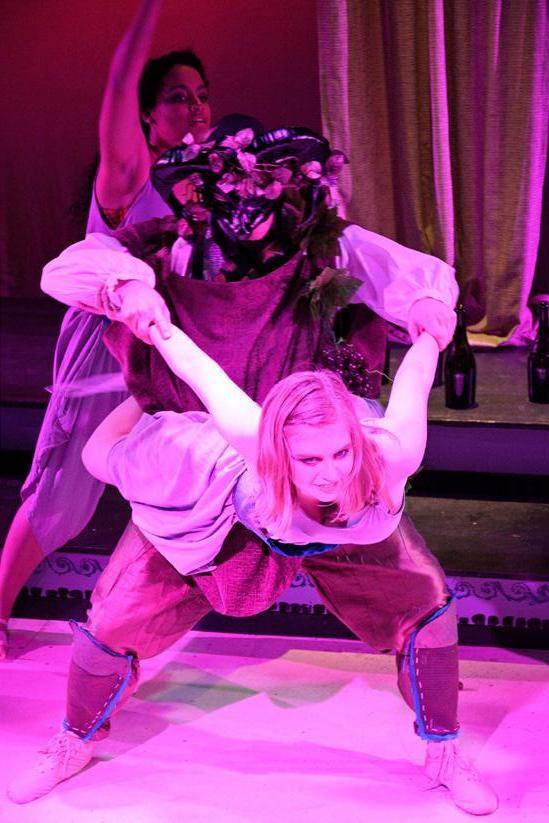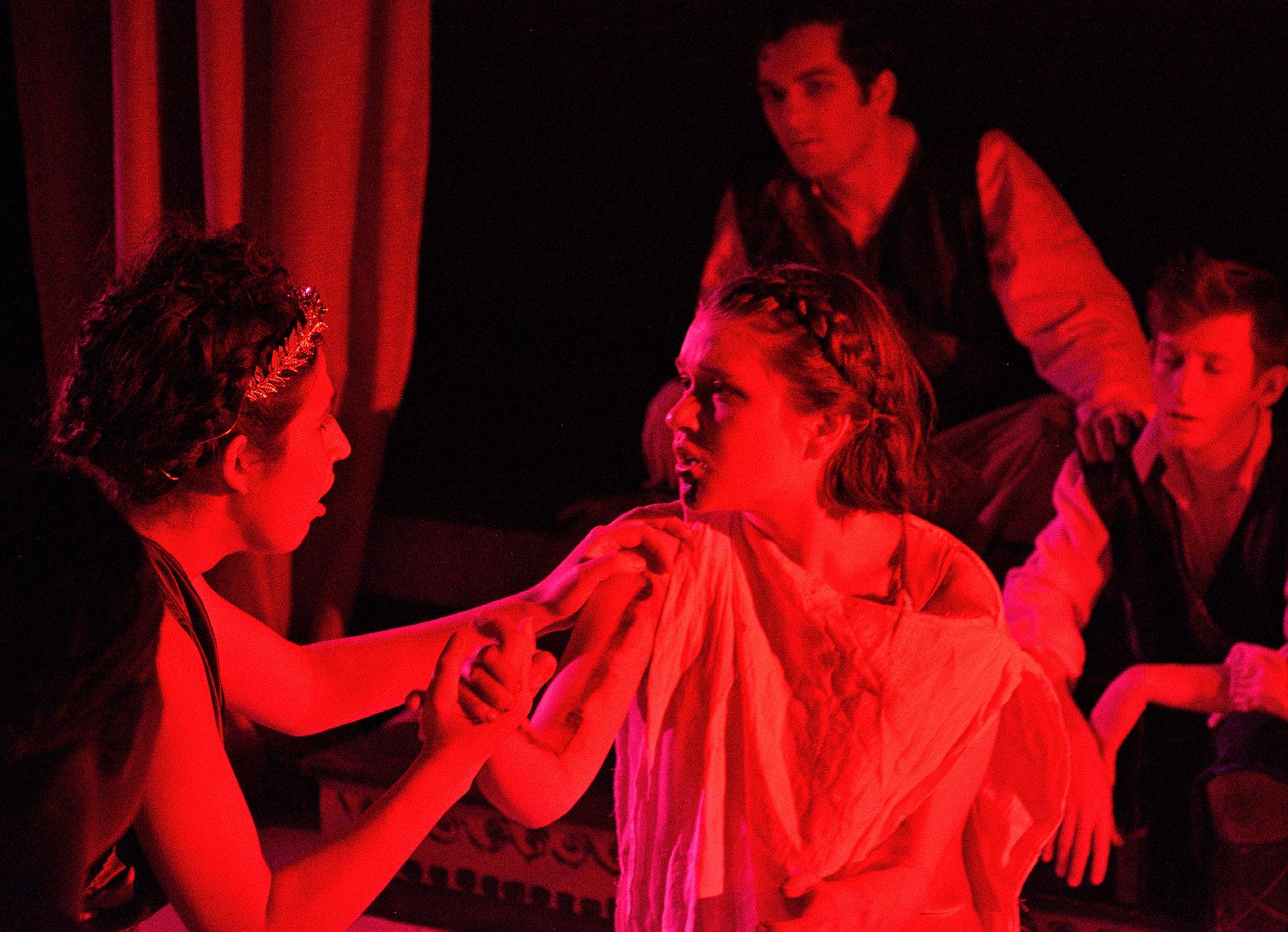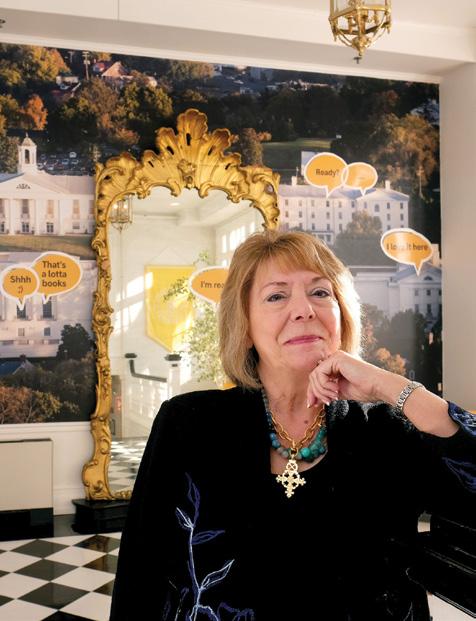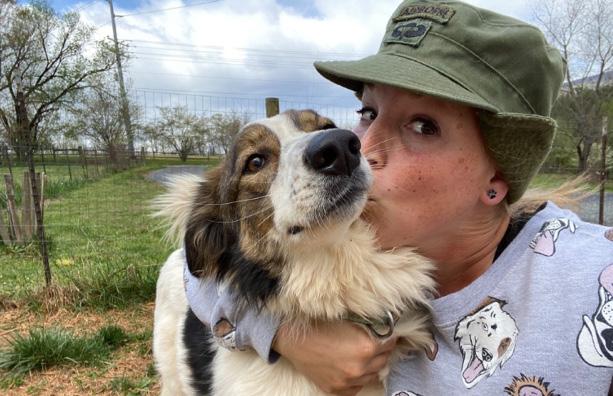
6 minute read
All In
Expansive collaboration marks theatre production
Sometimes making great art requires the brilliance of a single mind. But most of the time? It’s a group effort.
Advertisement
Early in the new year, MBU theatre launched a largescale collaboration around The Love of the Nightingale by Timberlake Wertenbaker. A thought-provoking play that is at times tough to watch, Nightingale retells a story from
Ovid’s Metamorphoses about Philomele, who is raped and mutilated by someone she once trusted, and how she is able to transcend an experience that threatened to define her. (See sidebar for more on how MBU theatre is working to tell stories like Philomele’s responsibly.)
Rising to the challenge of the play, from navigating the plot to creating costumes, were representatives from several departments in the College of Visual and Performing Arts, the newest of MBU’s academic units formed at the beginning of 2019.

“Around 75 students logged hundreds of hours to bring you this play tonight and, as their director and fellow collaborator, I invite you to celebrate their work, vision, sweat, and brilliance. This is what collaboration looks like at MBU,” wrote Doreen Bechtol, assistant professor of Shakespeare and Performance, in her director’s note.
Several professors incorporated into their curriculum the experiential and practical work of making Nightingale.
Under Martha Saunders, assistant professor of art, eight students in her Drawing II course spent a month designing and building life-size dolls and headdresses for the production as well as creating artwork for the show poster and programs.
“For our visual art students, these projects allow for an experience to move beyond their individual focused studio practices, to a community effort,” said Saunders. “This collaboration challenged the students to work through ideas both by themselves and with each other.”

Adjunct Assistant Professor of Theatre Molly Seremet and her theatre production students also contributed by designing and building Greek-inspired masks and dying fabrics for the costumes that Seremet designed. Film students in Adjunct Assistant Professor of Film Allan Moyé’s class created a documentary that chronicled the rehearsal and production process, and they helped put together a short teaser to advertise the play.
“To make a play requires a tremendous commitment of time in order to invest in the physical, emotional, and imaginative labor required to build the world,” Bechtol said. “I enjoy a collaborative process because I love working and learning from my colleagues and from students. The process feels more creative and alive when more voices contribute to the process.”
From actors to artists to film-makers, here are some selected voices of the students and alumni who came together to create The Love of the Nightingale on stage.
JILLIAN WALKER ’22
A business major, played three roles — a chorus member, Iris, and Aphrodite — and worked on publicity
“Even though it was my first time acting in a couple of years, I had so much support from not only the other actors, but also the director, assistant directors, and everyone on the crew. I’m so glad that these roles are offered to every person interested in theatre without bias, whether they are a senior theatre major or not. It creates a community that allows for true growth and showcases so many students, including me. As long as you have a passion for theatre and performance, you will be welcomed into the community with wide arms.”
FELICIA MAZIARZ ’21
A studio art and political science double major, helped create props and promotional materials
“The best part of working on Nightingale was that it allowed us to make art that would be seen outside our class, and made us work collaboratively. I think the most challenging part was the short timeframe, as we had tight deadlines to create all the pieces.”
LAYLA OPHELIA TEEARS ’18
A theatre major, was an assistant director
“The Love of the Nightingale was the most collaborative project I’ve ever had the pleasure to take part in. Our director, Doreen Bechtol, has a special way of pulling an entire community into a room to create art. The division between departments faded as everyone focused wholeheartedly on the show — it had the feeling of an ensemble, where every voice was heard and everyone had a hand in the finished piece.”
ANDREW POLLOCK ’22
A performing arts — theatre and film major, played Prince Itys and helped film the documentary about making the play.
“The most rewarding part of filming for the Nightingale project was attempting to find those moments of artistry within the work. It was always gratifying to catch an actor making an artistic decision that would influence other actors, the director, or the play at large. It’s kind of like a dissection: you get to see all the nitty-gritty parts that make up the whole in a rehearsal and when you put that to film you get these great stories of actors as people as well as artists.”
WILLOW KEITH ’21
A performing arts — theatre major, played Philomele
“The contributions from other art practitioners helped me to see some of the work we were doing in a new light. The powerful and abstract creations of the studio art department reminded me that the work we were doing on Nightingale was heightened, a world of myth and legend, rather than the everyday one in which we live. It helped to add scale to our performances. Working with the film department, on the other hand, reinforced the importance of detail. Of the effect of a gesture, a single blink, a breath.”
Staging Gendered Violence

MBU theatre’s production of The Love of the Nightingale was advertised with a warning — it contained material pertaining to sexual assault, gendered violence, and rape, as well as other forms of violence, including murder.
One of the students grappling with such challenging material and navigating how to best tell her character’s story was Willow Keith ’21.
“In the role of Philomele, I was given the responsibility of representing countless individuals who have been the target of sexual violence and/or been silenced by the powerful,” said Keith. “It was important that I told her story in a way that was respectful and not stereotypical or exaggerated. It is not my place to say if my efforts succeeded or not, but I was helped immensely by Molly Seremet, our intimacy director, as well as the directors and my excellent castmates.”
The Love of the Nightingale marks the first time the theatre department has formally named someone to facilitate in the role of intimacy director. Faculty members Seremet and Doreen Bechtol, who directed Nightingale, worked to establish a culture of consent in the rehearsal room in order to enact violence responsibly in the play.
How to ethically stage gendered violence — acts against women, men, the transgender community, or those who identify as nonbinary — is a topic of discussion nationally among theatre practitioners, and Serement, Bechtol, and fellow faculty member Kerry Cooke brought the conversation to the MBU community in a symposium last fall.
The symposium aimed to help MBU’s theatre makers keep actors safe from the rehearsal process through performances, and serve the story that they are telling. In workshops and talks, attendees thought through how to use violent acts in a production, and how directors can help ensure that there is clear communication between scene partners about the forms of contact that are acceptable.










